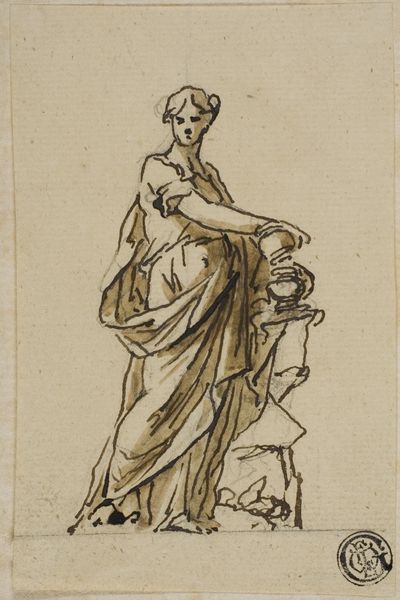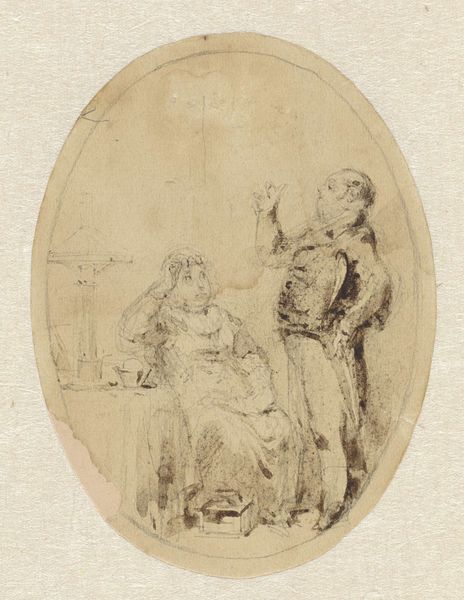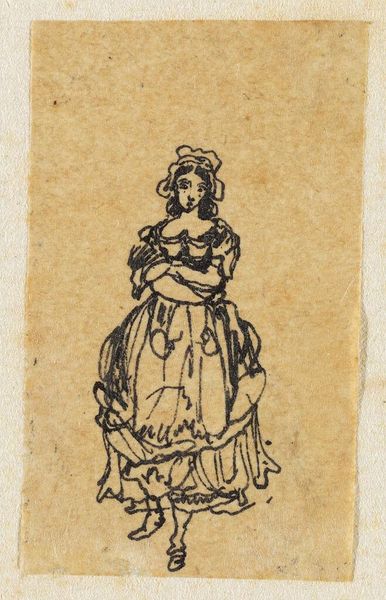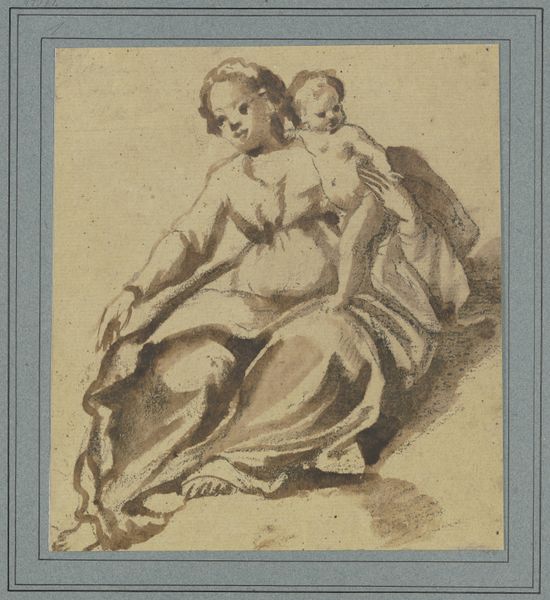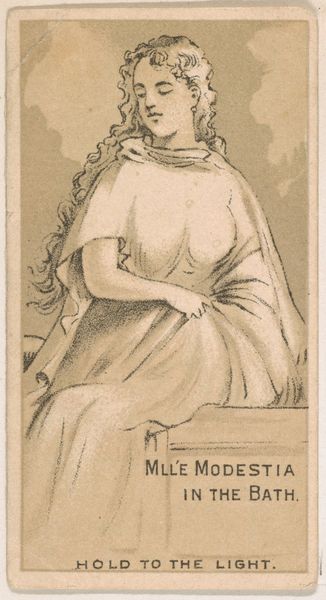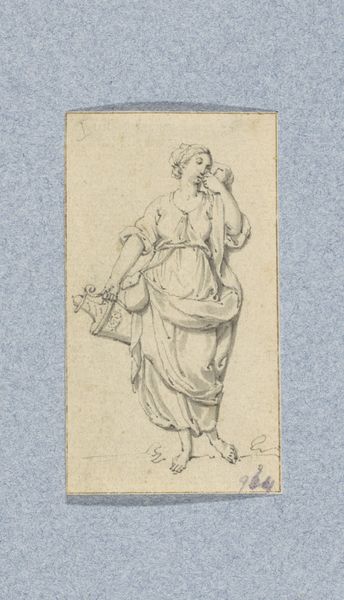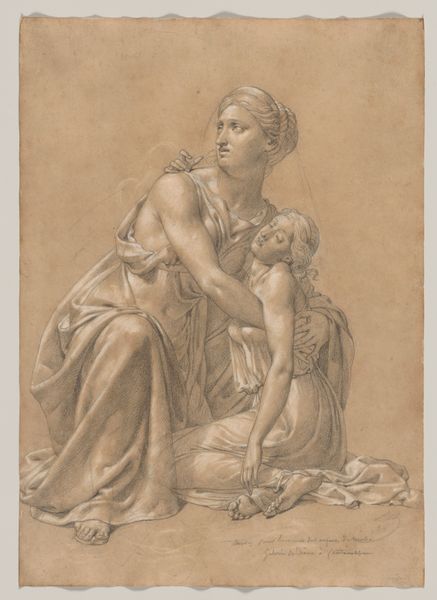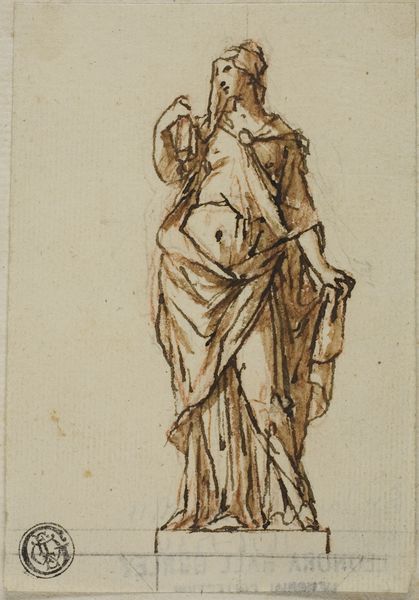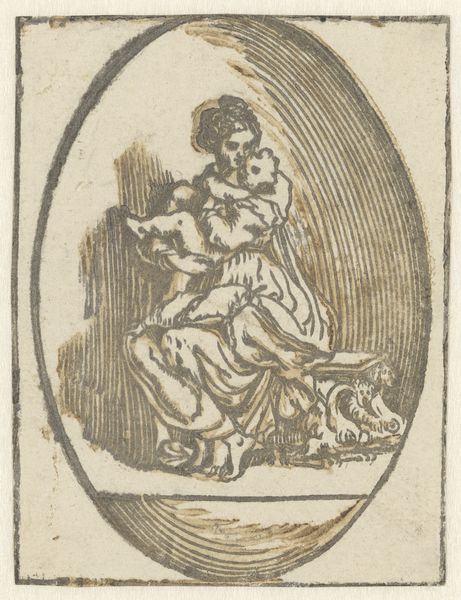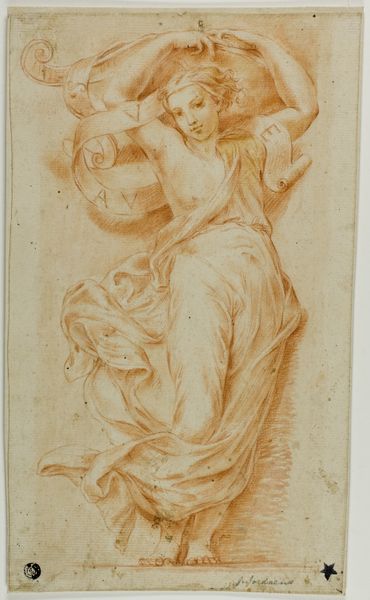
En siddende kvinde med et lille barn i favnen 1743 - 1809
0:00
0:00
Dimensions: 47 mm (height) x 38 mm (width) (bladmaal)
Curator: Immediately, I’m struck by the tenderness radiating from this ink drawing. The woman’s embrace feels both protective and loving. Editor: The piece is "En siddende kvinde med et lille barn i favnen"—"A seated woman with a small child in her arms"—created by Nicolai Abildgaard. He worked primarily during the latter half of the 18th century. We have here an intimate domestic scene. Curator: The sketch-like quality adds to the intimacy, almost as if we are viewing a private moment, quickly captured. There’s an ancient feeling too—the woman's dress seems almost classical, with a nod to antique sculptures, yet softened, familial. Editor: That is a very astute observation. Abildgaard, working during the rise of Neoclassicism, often engaged with classical motifs but within a specific socio-political frame. Remember that this era saw an increased emphasis on republican ideals. The representation of motherhood can be understood within this framework. It reinforced ideas about civic virtue. Curator: I can see that, but to me the imagery here evokes more universal symbols. Mother and child… that image resonates across cultures, across millennia. It speaks to primal instincts and nurture. We see echoes of similar themes in countless artistic traditions. Editor: True. Though Abildgaard worked in a time when art served very distinct didactic purposes, one could argue that images like these, circulating publicly, had an impact on societal values, subtly reinforcing patriarchal social structures by idealizing domesticity. The depiction serves an ideological function in the public sphere. Curator: Perhaps, but on a personal level, I respond to it as a powerful embodiment of love and security. The symbols feel deeply personal. I also detect how her gaze is turned towards the baby, she doesn't need the audience, she only need her son. Editor: And seeing it contextualized within Abildgaard’s body of work really underscores how artists both reflect and shape the societies in which they live. It opens us to new understandings. Curator: I agree, it really gives this seemingly simple scene deeper significance, highlighting the interesting space where social function and heartfelt iconography collide.
Comments
No comments
Be the first to comment and join the conversation on the ultimate creative platform.
